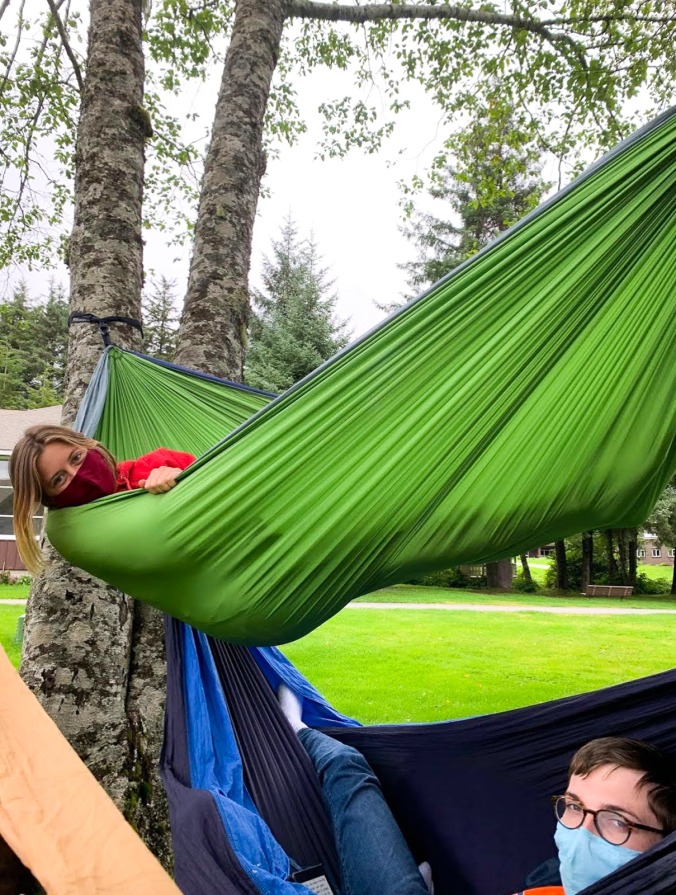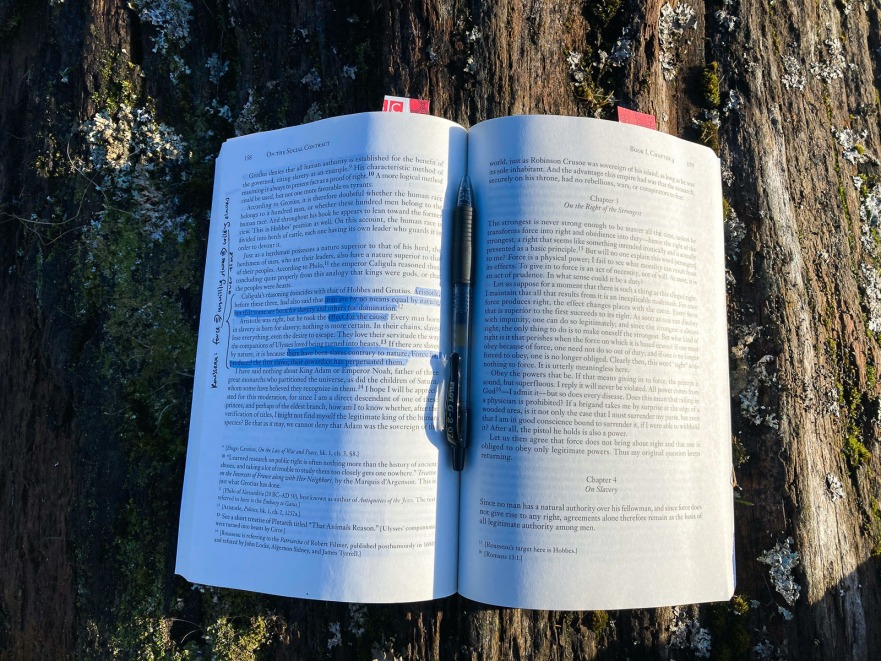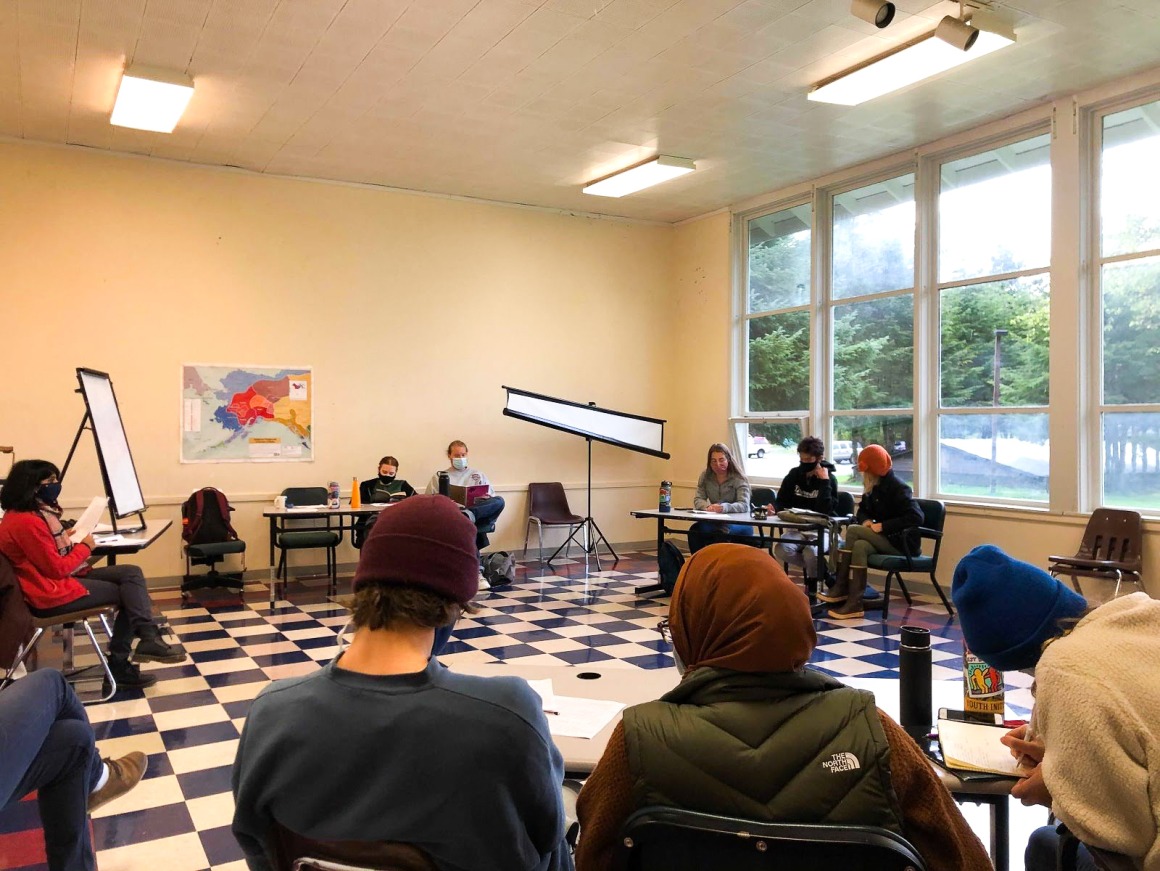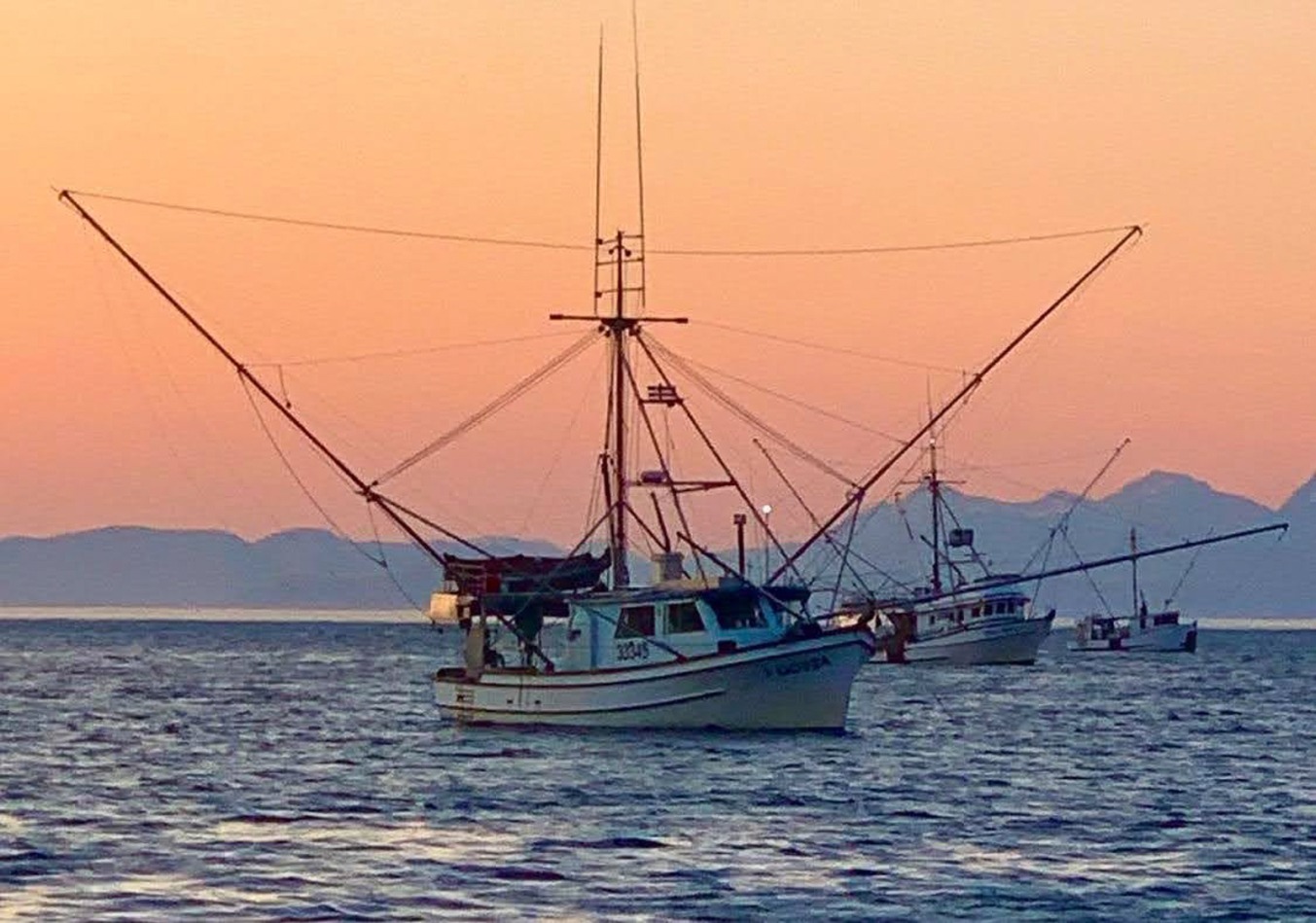On a rainy Friday on the historic Sheldon Jackson campus, a group of Outer Coast Year students imagined a very different Sitka: one with skyscrapers, seedy hotels, a string of unsolved murders, and four million Jewish refugees.
Students gathered for a workshop in Writing About Place: What is Home?, their first course at the Outer Coast Year.
They had just read Michael Chabon’s novel, The Yiddish Policemen’s Union, an alternative history where the real-life proposal to establish a Jewish settlement in Alaska has come to fruition. The discussion leader — a student — wondered, “What is the emotional question in Chabon’s book?” Her peers responded: “This is a book about home;” “Will a population as diasporic as the Jewish people ever find a home?”
So began a discussion in faculty member Sanjena Sathian’s Writing About Place: What is Home?. For Sanjena, narratives of home are foundational to understanding one’s obligation to place.
“I want students to leave with a new vocabulary for what it means to be in community. When we write about where we come from, we become more at home in that place. This is what makes this class deeply personal for me. I want students to leave with a fuller relationship to home. You can only be an advocate on behalf of your community if you understand the narrative of your home.”
Sanjena Sathian, OC Year Faculty
Through seminar-style discussions, writing prompts, lectures on craft, and workshops, Year students had the opportunity to think deeply about place and positionality — both in Sitka and in their unique home communities.
The service pillar is essential to students’ study of place in Sitka and they spent every afternoon investing intellectual and physical labor to support the work of local non-profits. Writing About Place enabled students to push their engagement with Sitka one step further by interviewing members of the Sitka community. One student, Imaan (Fishers, IN), found commonality between herself and a salmon troller, Eric Jordan, through common rituals and stories of immigration.
As in Imaan’s experience with Eric, Sanjena noted that students learned “how to write about other people…how to do research and to interview and to listen. These are valuable skills wherever you go, whether you’re a filmmaker or a community organizer.”
Imaan and Sanjena both saw the process as a way to “fall back in love with writing.”
Imaan said, “We’re writing for the sake of writing, for the sake of telling a story. I get to ask, ‘What do I want from my writing?’ rather than someone else. I’m genuinely excited about writing, and I haven’t experienced that in a long time.”
One key component of the classroom was ‘workshop’: a model where each student took the floor for one class and their peers came prepared for a discussion-based critique of a 10 – 25 page writing submission.
“The workshop experience isn’t just for the person being workshopped. We owe it to each other to make that space lively — we all benefit from it.” – Imaan
From the texts and from each other’s work, students were on the lookout for things they could “steal”: elements of craft that they found effective in others’ writing that they could mold to their own work. In Sanjena’s course, students learned that a reading life is a prerequisite for a writing life.
Students like Kenzie (Denali, AK) took real ownership of their writing lives during the term:
“I’ve developed a craft and style to my writing. I didn’t even know that those were characteristics my writing could have. Sanjena told me to write it all down. For her, the question isn’t ‘Is this right?’ but ‘Where could we take this?’” — Kenzie (Denali, AK)

Blonde Indian by Ernestine Hayes was the first text assigned to 2020-2021 Year students. Students took to reading it in stacked hammocks on the front lawn.
Sanjena’s classroom was structured in a way that allowed students to leverage the self-governing aspects of the Year community in an academic environment. Students lead independent discussion sections as preparation for class and ratified their own values for the workshop space. On the individual level, students were prompted to think critically about the ‘why’ of their own writing and for their writing community at large. For Kenzie, the community-oriented element of the course was precisely why it felt so important.
Kenzie said, “It matters because we live together. Our relationships are dependent on being able to share with each other in a way we wouldn’t necessarily in a regular college class. We are able to make decisions that are going to be best for everyone.”
In the final week of the term, students dove into final revisions on their workshop pieces. (As Sanjena emphasized, revision takes twice as long as writing the actual piece.) Coming out of the course, Sanjena hoped that this would be only the beginning of a life-long relationship to writing and place for students.
“People often think their landscapes aren’t worth writing about, but it isn’t true. People are eager for those stories – and through this course, I hope to get students to believe that. Especially for places underrepresented in mainstream narratives, it’s urgent that we write about those spaces.”
Sanjena Sathian, OC Year Faculty


